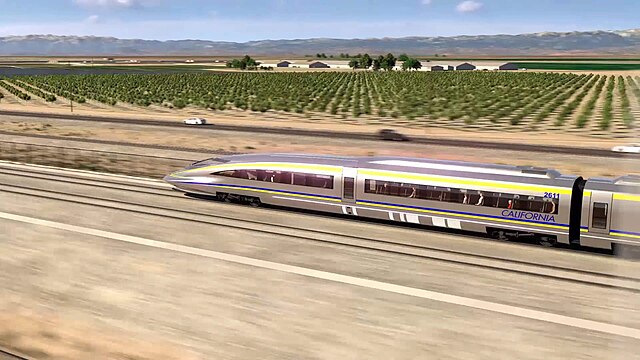At a moment when California high-speed rail faces possible abandonment, the project’s new CEO sees a tantalizing lifeline: $1 billion annually from the state, supplemented by an infusion of private capital.
It’s a hopeful, perhaps heady proposition. High-speed rail has been dogged by cost overruns, construction delays and political fights since its inception in 1996, when California leaders first dazzled constituents with the promise of a three-hour train ride from San Francisco to Los Angeles. Now, the state is struggling to deliver even the middle portion of that rail system, a 171-mile stretch from Merced to Bakersfield.
- Read more: Trump administration pulls $4 billion in federal funding for California high-speed rail
- Related: High-speed rail was supposed to signal S.F.’s downtown renaissance. Now it feels like a mirage
The latest blow came last month, when the Trump administration threatened to pull $4 billion in federal grants for the project.
But when Ian Choudri was appointed last August to run the High-Speed Rail Authority, an agency created to plan and oversee the train system, he refused to let rising costs or critics distract him. Instead, he latched onto the public-private financing gambit, convinced that it just might work.
“We are looking at state-level commitments so that we can bring private equity partners in,” Choudri said during an interview at the Marriott hotel in San Francisco, where he attended the American Public Transportation Association conference. Appearing on a panel with three executives from global infrastructure firms, Choudri inhabited a unique role: part public steward, part pitchman.
“There are significant ways to monetize (and) commercialize long linear rights of way,” said Sia Kusha, senior vice president of Plenary Americas, a firm that specializes in public-private partnerships. Plenary has helped build metro rail systems, hospitals, freeway express lanes and a vast expansion of the UC Merced campus.
Although Kusha did not provide specific details about how to commercialize high-speed rail, others cited the fare box as a basic source of revenue. Beyond that, companies could develop real estate around stations or operate tunnels and charge for every train that rolls through. For businesses willing to engage in a little magical thinking, the opportunities seem boundless.
The Rail Authority would draw its $1 billion a year in state funds from a climate emissions program that pays for a wide range of clean energy goals, from public transit to electric vehicles. If it secures that bedrock support from the government, high speed rail officials will try to entice private financiers to cover the remaining costs, giving the bullet train a fighting chance of success.

